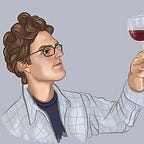Chianti: The Myth of the Famous Ricasoli “Recipe”
This is part two of my Chianti series — read part one here.
Listen to this article! It’s embedded at the end of the article, or can be accessed on Anchor.
There’s little doubt that Chianti is one of the world’s most well known wine regions. Though connoisseurs may prefer to collect Barolo or Brunello, to casual drinkers it is surely the most recognizable name in Italian wine, and aside from a few famous Frenchies, perhaps all of Europe. There is also so much that is misunderstood in this famous region. Like, why are there two separate DOCGs? Or, did the original version really include white wine? What the heck is Gran Selezione?
In this part, I’ll discuss the famed Ricasoli family. Most commonly linked to the area’s wines by the supposed creation of the modern Chianti ‘recipe’ in 1872 — which we’ll get to shortly — the family’s impact on the history of the region and influence on its wine actually goes much deeper.
Though their genesis is difficult to pin down, it seems safe to report that the Ricasoli-Firidolfi clan owned a broad swath of Tuscan countryside by the 11th century, if not prior. Of Longobard origins, they likely migrated to the area as part of the feudal court of Emperor Charlemagne. During the middle ages, they amassed as many as 15 castles in the Chianti area…
